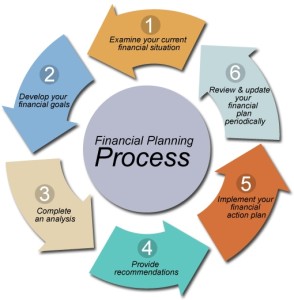- Examine Your Current Financial Situation and Goals
The process begins with a thorough assessment of your needs, anticipated cash flows, goals, and risk profile. This step involves a detailed understanding of your values and approach to investing. The full financial picture is evaluated, covering aspects such as insurance policies, trusts, employee benefits, Social Security, pensions, and other financial products. - Develop a Financial Plan Tailored to Your Goals and Needs
A personalized plan is crafted to align investments with specific goals. This comprehensive strategy typically includes asset allocation, goal setting, estate planning, insurance analysis, tax planning, and continuous risk management to support your financial objectives. - Establish Proper Legal Structure and Legacy Planning
To complete the financial plan, collaboration with an extensive network of professionals—including accountants, insurance agents, and attorneys—is coordinated. This ensures that legal structures are in place and assets are protected from taxes and unforeseen liabilities. Existing financial relationships are incorporated to implement the most suitable strategies. - Analyze Taxes, Evaluate Investments, and Provide Recommendations
Tax implications and embedded gains are carefully considered when assessing the appropriate asset allocation. Specific investments are identified to support the overall financial strategy while minimizing tax exposure and enhancing tax efficiency. - Implement the Plan and Construct the Portfolio
A customized portfolio is constructed to match your risk profile, liquidity needs, values, and goals. Cash flow projections, time horizons, and risk tolerance are all taken into account. Each portfolio is meticulously crafted to ensure alignment with the individual risk profile established in the financial plan. - Monitor and Update the Financial Plan Regularly
Portfolios are actively monitored and managed on a continuous basis. Investment strategies are regularly assessed, with proactive adjustments to asset allocations made to capture opportunities or mitigate risks in response to current market conditions. Ongoing communication ensures that you remain informed and confident in the progress toward your goals. Portfolios are adjusted as needed to reflect market changes and evolving personal circumstances.
Retirement Planning, Financial Advice, Wealth Management

